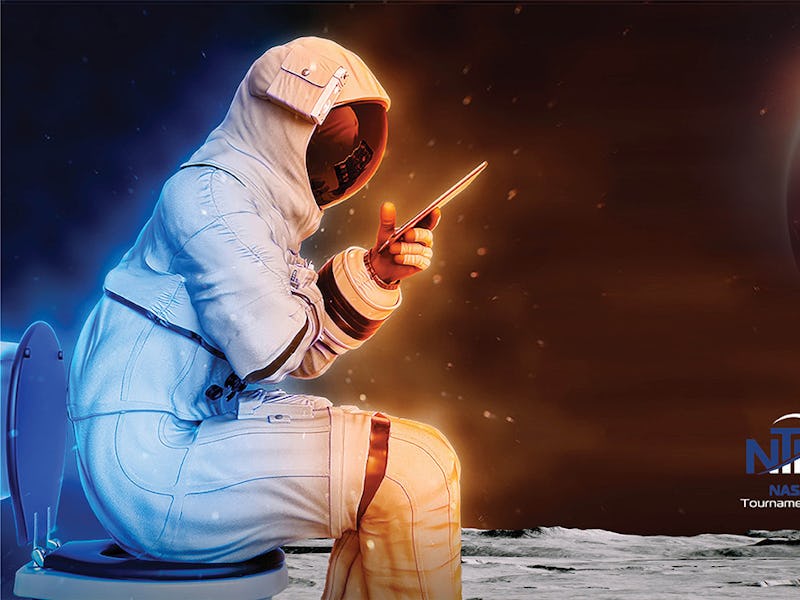NASA is launching a $23 million toilet to the ISS tonight
This is a much-needed upgrade for future space missions.

Nature calls, even in space. And when it does, it's not always easy for astronauts floating in a microgravity environment to heed its call without creating some mess.
But as space agencies set their sights on longer journeys to the Moon and beyond, they want to make sure astronauts enjoy some basic comforts on their spacecraft. Which is why NASA is launching a brand new toilet to the International Space Station (ISS) on Tuesday — a much-welcomed upgrade to the everyday life onboard.
The new space toilet will launch onboard a private cargo spacecraft from NASA's Wallops Flight Facility in Virginia at 10:27 p.m. EDT.
The toilet, which is officially named the Universal Waste Management System, is worth $23 million. It is 65 percent smaller and 40 percent lighter than the toilet currently being used on the ISS, although it is designed for larger crews.
UWMS will feed pre-treated urine into a regenerative system, which recycles water for further use.
NASA designed the loo with the upcoming Artemis mission in mind. The astronauts onboard the ISS will test it out, providing feedback to the space agency so that they can improve on the design before installing it on the Orion spacecraft for the 10-day journey to the Moon.
As NASA also aims to send the first female astronaut to the Moon, the toilet was designed for better use for women, too.
The space toilet includes a urine funnel, where the urine is filtered, processed and turned to water that the astronauts use afterwards.
“We recycle about 90 percent of all water-based liquids on the space station, including urine and sweat,” NASA astronaut Jessica Meir said in a statement. “What we try to do aboard the space station is mimic elements of Earth’s natural water cycle to reclaim water from the air. And when it comes to our urine on ISS, today’s coffee is tomorrow’s coffee!”
So yes, the astronauts do drink their own urine.
This urine recycling process decreases the need to launch a supply of water to space, particularly on longer, roundtrip flights to and from Mars, which could take up to two years. NASA aims to recycle at least 98 percent of urine before the planned trip to the Red Planet.
How do astronauts go?
Well, it's an even less pleasant experience than on Earth.
Since there's no gravity onboard the ISS, astronauts have to suction the urine from their bodies using a funnel that has a fan with airflow. But it gets even more complicated when it's time for number two, astronauts have to aim at a pretty small target on top of a silver can that vacuum sucks the feces.
The new toilet being sent up to the ISS was designed in a way that would make less of a mess, and better control of smell, as the air suction automatically starts up as soon a the lid is lifted. It also includes foot restraints and handholds for the astronauts to keep themselves in position while floating through microgravity.
An illustration of all the different parts of the space toilet.
The feces is then sealed up in a plastic bag and thrown out when it's time for space trash pick-up. The canisters filled with the feces are burned upon re-entry into Earth's atmosphere, but some fecal samples are kept to evaluate the astronauts' health.
NASA is also looking into possibly recycling the feces for water recovery. But perhaps the astronauts won't be too thrilled about that one.